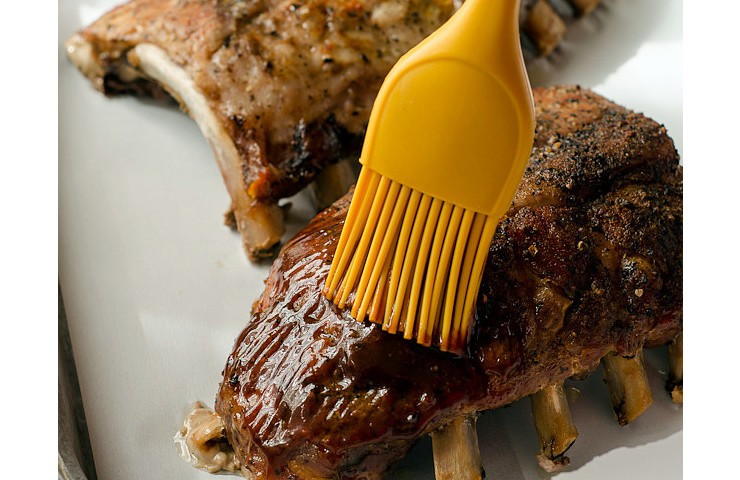[exceptional-citing quoted=”rachel” template=”bubble-gray-round” date=”” ]Today, as I watch Top Chef reruns and watch professional chefs compete in “Restaurant Wars,” I have Clayton Curtis — of Instawares, an online restaurant supplies and equipment company — to share some pointers for those with a pipe dream to open a restaurant of their own. You do have to do more than just be able to make beautiful and delicious food! Thanks, Clayton![/exceptional-citing]
Many amateur chefs have flirted with the idea of opening their own restaurants. The idea behind making your culinary vision come to life is irresistible to many would-be entrepreneurs. What many people don’t realize though, is that the failure rate for restaurant businesses is extremely high and the amount of time and resources required to sustain one is astronomically high compared to other industries. Before you make the dive into starting your own restaurant here are a few tips to help you in the pre-opening process.
1) Research Demographics
Have you ever driven through a small, seemingly dead town while on a road trip? Maybe you even live in one of these towns. What makes these places “dead” exactly? It’s not the lack of houses, for all you know there are sprawling suburbs that have $500k estates that you can’t see from the road. The distinction of a dead town is due to it lack of businesses. In particular, businesses you’d associate with prosperity – Starbucks, Williams Sonoma, Whole Foods, high-end car dealerships, etc. If you’re noticing that the businesses are predominately generic fast food chains like McDonalds, Hardees, and Dunkin Donuts then you can assume that the area is lower-income. A chain like Starbucks has done their research and most likely found that the economic climate of an area couldn’t support a gourmet coffee shop.
Use These Same Principles When Researching Potential Restaurant Sites
Obviously, geography plays a huge part in what kind of restaurant you open. Research what the demographics are in the area. If you plan on opening a BarBeCue joint then you may want to look at more rural areas where you’d typically associate with those kinds of foods. On the other hand, if you want to open a high-end steakhouse you may want to look in areas associated with discretionary income. Contact the local Chamber of Commerce or just do an eye test to see what kind of businesses the area can support.
2) Visit Your Competitors
Once you’ve decided what kind of restaurant you want to open then head over to a similar restaurant in the area. Visit the popular ones and also the restaurants that seem like they can shut down any day. Take notes. With the popular restaurants try to notice what they’re doing right. Some things to look for:
- Marketing – Do they have a sign that says “follow us on Twitter”. What marketing efforts are they making offline and online to attract new customers and communicate with their current ones. With social media and the internet, it’s more cost effective than ever to market your restaurant business.
- Food – Well this is obvious. A restaurant can’t be successful without good food. Notice how they prepare it and what dishes are their most popular.
- Customer-base – Who’s in the restaurant? What kind of people are they appealing to? Younger, older?
- Location – You don’t want to open a restaurant in close proximity to a similar one. Unless you really plan on blowing it out of the water you want to map competitors’ locations and plan accordingly.
- Aesthetics – An Irish pub should look like an Irish pub – lots of wood, black paint, etc. Although you’d be surprised at how little aesthetics matter sometimes (think of “hole in the wall” places that have loyal patrons) there still important in establishing credibility. If your opening a Mexican restaurant build accordingly.
When visiting restaurants that seem to be failing take similar notes. How does what they currently do make them a failure?
3) Establish Roles and Seek Help
What are you good at? Where do you see yourself fitting in with your new restaurant? A passion to cook isn’t enough to make it in this business. While you don’t necessarily need a Wharton MBA to run a restaurant it does help to have some knowledge of business basics. Luckily, there are great online tools to help you with finances, payroll, etc. You may want to partner with someone who has experience (managerial or ownership) in the restaurant business or at least someone who’s familiar with the common processes brick and mortar businesses face -hiring, purchasing, taxes, filing the proper forms etc. In a restaurant there should be several top level role players that satisfy the different and ever-changing needs of the restaurant industry. It starts with your passion but ends in the execution. Surrounding yourself with knowledgeable/resourceful people will help you get your business off the ground. Trying it all on your own will only end in failure. The restaurant business is simply too complex to take a one dimensional approach.
4) Secure Proper Funding
Ask around, restaurants require a lot of money up front. Not only will you need to buy all the necessary equipment and supplies but also secure land or buy an existing property. Commercial real estate is a different beast than residential. Often, property owners will charge more than they typically would for residential because there are profit opportunities at stake. When you buy a house it’s usually zoned for people to live not to have a business therefore the land is a fraction of what it costs in a crowded street. Especially in areas that have a proven business presence, expect to pay top dollar for the opportunity to open a business in one of these thriving places. Another thing to consider how to structure the contract. Many commercial landowners require leasers to sign a two year contract which includes steep opt-out fees. It’s good practice to lease land when you first open your restaurant. Or at least work something out where you can lease to own.
Getting Investors
Securing investors for your restaurant business may be the most challenging aspect of the process. Before you make a pitch it’s wise to consult with business-minded people who’ve had experience bird dogging money previously, perhaps (and hopefully) it can be the business partner you’ve chosen to help you get the whole thing off the ground. An important part of this process is to convey a solid business plan that shows the possible R.O.I. to the investors.
5) Hiring Staff
The staff is the face of your business. Often times when you hear people complaining about a restaurant poor service will be at the top of the list. It can make or break your restaurant. When you’re known for poor service it can have a detrimental domino effect. When hiring specifically for the wait staff there are a few things to consider.
- Do background checks – you need to know who’s representing you business. Spend the extra hundred dollars or so to have peace of mind.
- Conduct “situation” interviews – have potential waitstaff perform in a real life situation. Have them come in and shadow a waiter for a shift.
- Aesthetics matter – if you’re opening a sports bar then it’s wise to hire a good looking waitstaff.
- Hire “culture fits” – culture is important at any company. Restaurants are no exception. Hire people who share similar values and understand your vision.
Also, when hiring cooks it’s important to look for people with experience. If you want to start out on the right foot with your restaurant surely you’ll want the food to be top notch. Word of mouth is still the best way to promote a restaurant.
disclosure: this is a sponsored post.















